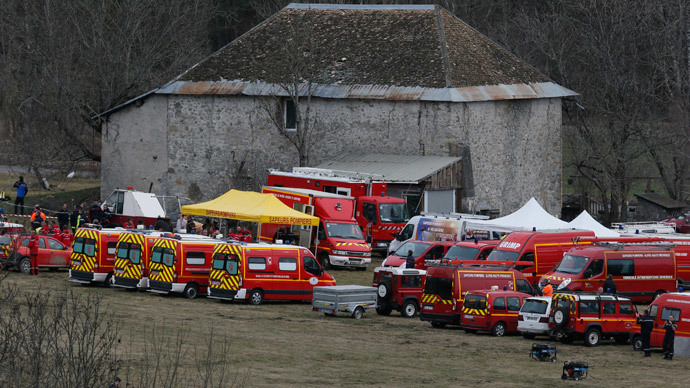A320 is ‘nanny-aircraft’ fully automated and easy to fly

The causes of the Germanwings plane crash remain to be seen, but as it started descending very rapidly it could be indicative of a pressurization problem or a complete loss of cabin pressurization, pilot Marin Medic told RT.
RT:What kind of causes may bring down a plane like this?
Marin Medic: Well at this point in any inquiry that you start right after the crash it’s quite difficult to know what actually brought the plane down. Although there is some information that started to surface on the web that seems to indicate that the plane initially had a very high descent rate from its cruising level. It started descending very rapidly and very quickly in a short amount of time which could be indicative of a pressurization problem or a complete loss of pressurization in which case the pilots would attempt to get the plane down to a breathable altitude as soon as possible. But so far it’s really all we know.
RT:Does flying an A320 aircraft pose any challenges to pilots?
MM: The A320 is known to be very easy to fly. Actually some pilots even don’t like it because it’s too easy to fly, it’s fully automated and it provides computer assistance to pilots preventing them from overstressing the plane, from slowing down too much. The computer will cut in if you try to make a maneuver that might be too extreme. So basically it’s kind of a nanny-aircraft. If you make a mistake it will try to catch it and correct it. So as far as basic handling of the aircraft goes it should have been even easier to handle than let’s say a classical type like the Boeing.
READ MORE: Pilot panic: Germanwings crews refuse to fly
RT:The last words from the flight were 'emergency emergency'. Does that offer any clues to what may have happened?
MM: That ties in quite nicely to what I’ve said before that it seems like it was a pressurization problem. They would have followed a certain procedure in case of a complete loss of cabin pressurization, which occurs if you have a rupture in the hull. Basically they would have quickly put on the masks not to fall unconscious due to lack of oxygen. They would have initiated an emergency descent and they would have called an emergency into the Air Traffic Control. So far it seems that this might be the most likely scenario.
RT:The aircraft was 24 years old. Is that old for a passenger plane?
MM: Not at all. Many pilots including myself in their careers have flown aircraft far older than that. An aircraft basically is not the same aircraft that came out of the factory because every single piece of equipment on it has a certain life span and it’s replaced at the end of that life span or overhauled completely. So basically we always fly new aircraft more or less.
RT:The altitude graph available shows the plane losing speed. What might this suggest?
MM: The loss of speed could be related to them trying to prepare for landing or something similar to that because that’s not fully logical, since in a rapid emergency descent you would go with your highest speed, almost your maximum structural speed, to get it to lose as much altitude as quickly as possible. But again all this data coming out of flight radar and similar systems has to be taken with a grain of salt at this point because this is a second hand data received from the transponder but it went through it partly. So it’s not necessarily 100 percent reliable although it is very indicative of what possibly happened.
READ MORE: 'Terrible loss': 3 British Germanwings victims named
RT:What can you tell us about the safety record of this particular model?
MM: The A320 after its introduction in 1986 has amassed over 6,500 produced airframes meaning that probably over 6,000 aircrafts are still in service of the various types from A318 to A321. And it’s really become the staple of the world’s fleet; it’s in every way similar to the 737 in reliability in means of handling and similar things. It’s pretty much a safe aircraft and a good aircraft.
RT:How long does it usually take to determine the cause of a crash like this?
MM: That all depends. There have been some tweets and information on the internet that civil aviation authority apparently said that they might have already recovered a flight data recorder and the cockpit voice recorder which then would very rapidly lead them to gathering the information necessary for a preliminary statement. But again that all remains to be seen…
RT:If the aircraft went down as a result of some technical failure, who is normally responsible for that?
MM: There is a twofold answer to that question basically. If this was a normal line operation and something failed catastrophically then basically it’s nobody’s fault. Because unfortunately things fail and things could fail in your car or on a boat, but unfortunately when it fails aboard of aircraft things be catastrophic even though the Airbuses have a large deal of system redundancy. Now if it’s something failed because of faulty maintenance then the buck would be passed to maintenance personnel and to the company itself. However I sincerely doubt that since they are known for extremely high levels of safety and maintenance.
MORE:
The statements, views and opinions expressed in this column are solely those of the author and do not necessarily represent those of RT.
The statements, views and opinions expressed in this column are solely those of the author and do not necessarily represent those of RT.











